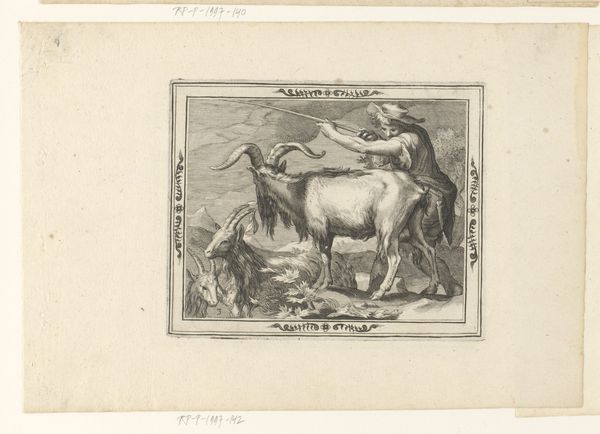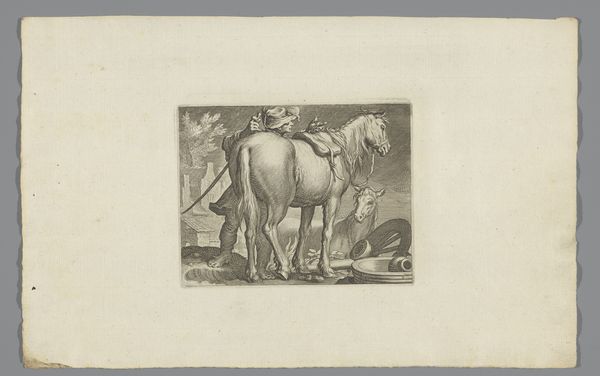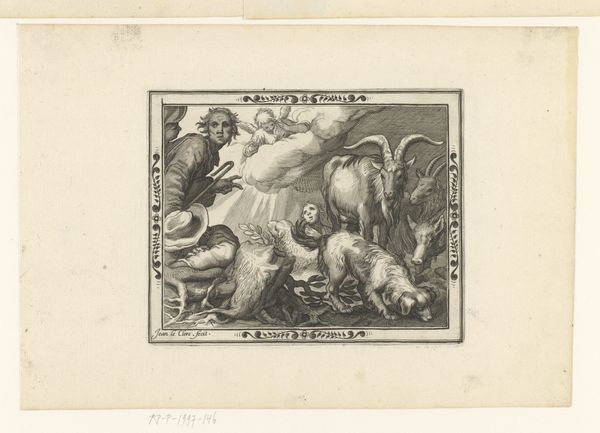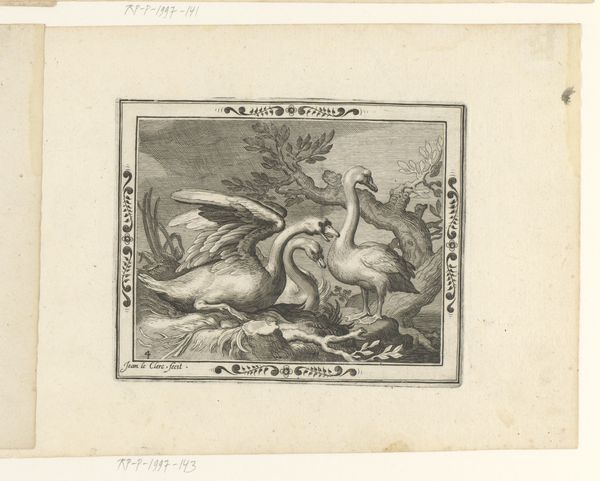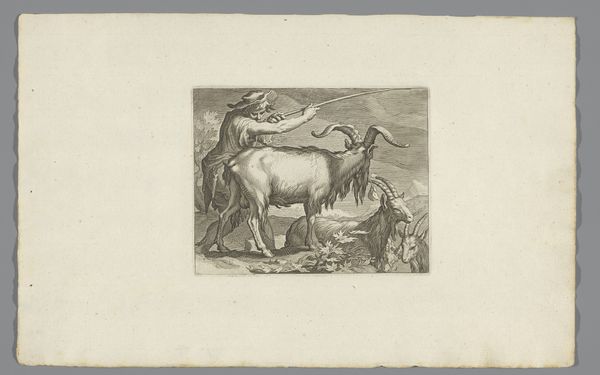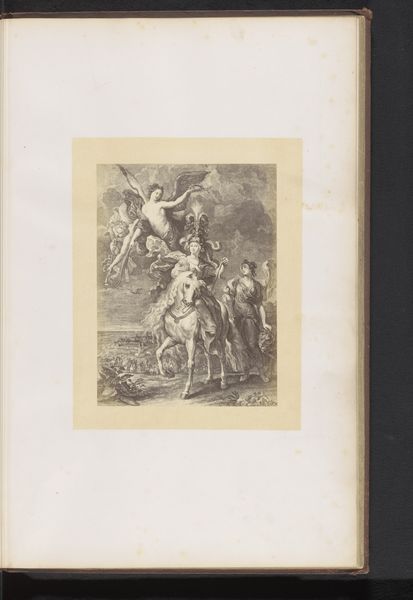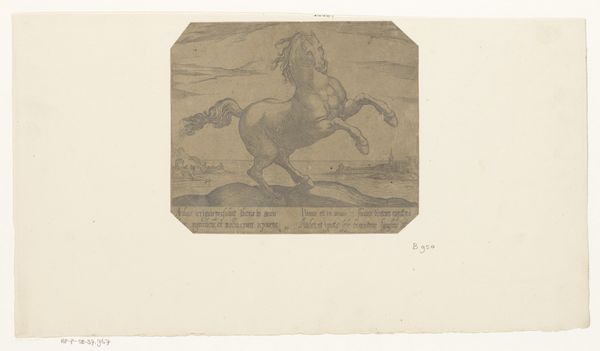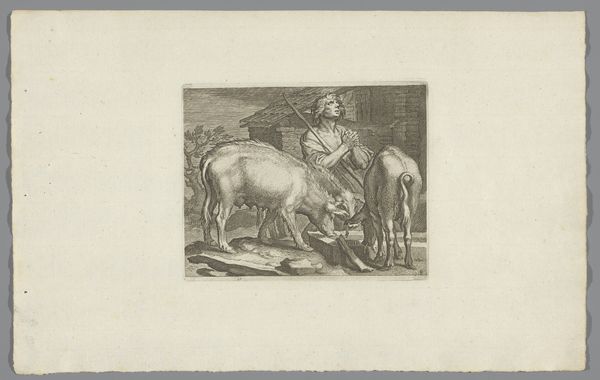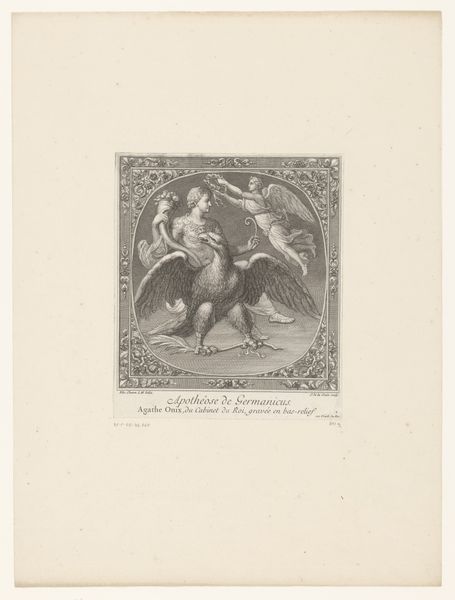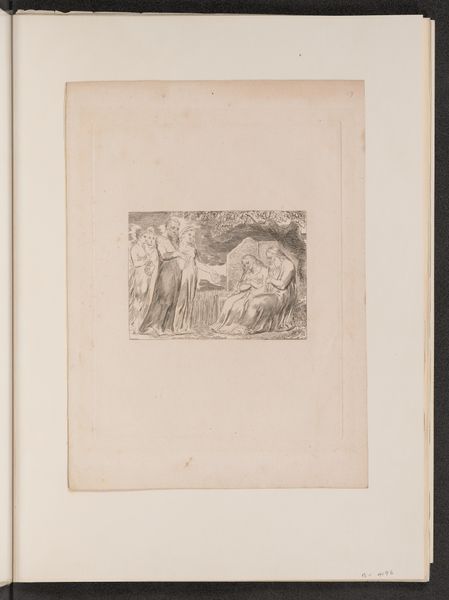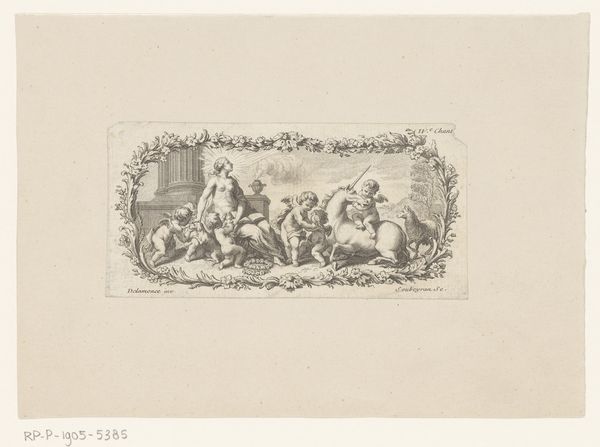
engraving
#
baroque
#
old engraving style
#
landscape
#
figuration
#
horse
#
genre-painting
#
engraving
Dimensions: height 122 mm, width 152 mm
Copyright: Rijks Museum: Open Domain
Curator: Let’s turn our attention to Jean Leclerc's engraving, “Twee paarden en een man," dating from 1597 to 1633. It currently resides here at the Rijksmuseum. Editor: The immediate feeling I get is one of pastoral fatigue. The slumped posture of the larger horse, the shadowed face of the man – there’s a weariness embedded in the very lines of the engraving. Curator: Absolutely. The baroque period, to which Leclerc adhered, reveled in exploring emotive states, often grounding them within genre scenes. Notice the composition. The framing within a frame isolates and elevates this everyday encounter to something...significant. Editor: It is certainly domestic and personal. One notes how this image encapsulates aspects of 17th-century Dutch life beyond noble portraiture or grand historical narratives. One wonders who these figures were, how this sort of subject matter came to be circulated for cultural consumption at that time? Was this scene meant to evoke wider social sentiments related to labor, the natural world, or even ideas around commerce or conflict? Curator: I see your point, it speaks to the rising merchant class and their relationship with land. I would suggest too, that Leclerc directs our eye specifically using textural variations achieved by the engraving process. Observe the contrast between the smoothness representing the horses and the sharp lines of the trees; they emphasize texture to signify different elements within an assumed hierarchy of human-nature. Editor: The positioning of the second horse – seemingly younger, perhaps less burdened, suggests possible readings of hierarchy related to social roles. Is there any possibility the sword could imply service? How would contemporaries react given various prevailing social strata and the circulation of images? This image speaks not only through artistic design but it’s likely reception by society itself! Curator: A potent thought! In its time, images like this had different meaning depending on who held them and it might carry multiple levels across any contemporary social-economic hierarchy too - truly highlighting art's integral, multifaceted role even then, even now, Editor: It’s been rewarding to explore not only how composition is formed to signify meaning within an image like this. But also by using what is framed socially; it encourages seeing how early modern viewers understood genre settings relative those dynamics they found at home in seventeenth-century European Culture..
Comments
No comments
Be the first to comment and join the conversation on the ultimate creative platform.
